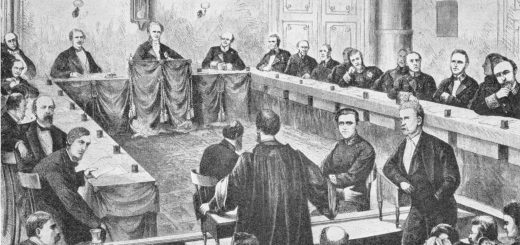Bell Canada: Applying the Vavilov Framework to Super Bowl Ads

The Super Bowl, the championship game of the National Football League (“NFL”) in the United States, is watched by around 100 million viewers every year. For over 40 years, the Super Bowl has been broadcast in Canada under a “simultaneous substitution” regime, in which, essentially, the same broadcast is shown in Canada but with different commercials (Bell Canada v Canada (Attorney General), 2019 SCC 66 [Bell], paras 1 and 12). This prevented Canadians from viewing the American commercials during the Super Bowl. American Super Bowl commercials are a cultural phenomenon—companies pay millions of dollars to create memorable and entertaining advertisements just for the Super Bowl, and some viewers admit to watching just for the ads, rather than for the actual Super Bowl.
Recently, the Canadian Radio-television and Telecommunications Commission (“CRTC”), after a “lengthy consultation process,” decided that the Canadian broadcast of the Super Bowl would be exempt from simultaneous substitution, “which meant that Canadians would be free to view the US broadcast that featured American commercials—which the CRTC described as being an ‘integral element of the event’” (Bell, para 2). They issued their decision through an order pursuant to s. 9(1)(h) of the Broadcasting Act, SC 1991, c 11, which states that the CRTC can require any television service provider to carry out their programming in accordance with terms and conditions that the CRTC specifies (Bell, para 2).
Bell Canada, along with the NFL, brought appeals against the CRTC’s new broadcasting policy, in accordance with the appeal procedure established by s. 31(2) of the Broadcasting Act. They argued that the CRTC did not have the jurisdiction to issue the order under s. 9(1)(h) of the Broadcasting Act, because orders issued under this subsection should only be able to “affect a programming service (that is, the entire output of a service), and not an individual program such as the Super Bowl” (Bell, para 27). The Federal Court of Appeal unanimously dismissed these appeals, concluding, after conducting a reasonableness review, that it was “reasonable for the CRTC to have interpreted that the term ‘programming services,’ as it is used in s. 9(1)(h), includes an individual program like the Super Bowl” (Bell, para 30). Following this dismissal, Bell and the NFL brought their appeal before the Supreme Court of Canada (“SCC”) on the same grounds.
SCC Majority Decision
At the outset of their decision, the SCC majority referred to the new standard of review framework from Canada (Minister of Citizenship and Immigration) v Vavilov, 2019 SCC 65 [Vavilov], which was released alongside Bell, to determine the appropriate standard of review in this case. Vavilov established that for appeals brought pursuant to a statutory right of appeal, the appropriate standard of review is correctness (Vavilov, paras 36-52). In Bell, the appeal was brought on the basis of s. 31(2) of the Broadcasting Act, which allows for appeals on questions of law or jurisdiction to the Federal Court of Appeal. Consequently, the SCC majority confirmed that the “applicable standard is therefore correctness” (Bell, para 35). They explained that the main question was whether the CRTC had been correct to conclude that it had the authority to issue the order “prohibiting simultaneous substitution for the Super Bowl” (Bell, para 36).
To answer this question, the majority first considered the nature and effect of the CRTC’s order. They explained that order effectively meant that “a television service provider that distributes both American and Canadian television stations airing the Super Bowl must do so without altering their respective signals” (Bell, para 37). Their order did not require television service providers to distribute a station that broadcasts the Super Bowl, it just required that they not use simultaneous substitution when they do so (Bell, para 38).
In determining whether the CRTC exercised its power correctly, the SCC majority first noted that it did not need to decide the particular question Bell and the NFL raised—whether the CRTC could impose conditions on the broadcasting of a particular program, rather than the station’s entire programming—because they determined that the CRTC did not have the authority to issue the order at all (Bell, para 44). They explained that “the CRTC’s authority under s. 9(1)(h)…is limited to issuing orders that require television service providers to carry specific channels as part of their service offerings, and attaching terms and conditions to such mandatory carriage orders,” and does not include “a broad power to impose conditions outside the context of a mandatory carriage order” (Bell, para 44).
The majority pointed to several contextual factors to support its interpretation of the provision. They explained that the “plain meaning of this statutory text” indicates that “the primary power delegated to the CRTC is to mandate that television service providers carry specific programming services as part of their cable or satellite offerings, and that the secondary power relates to the imposition of certain terms and conditions on such mandatory carriage orders” (Bell, para 45). Further, they referenced the history of the CRTC’s use of s. 9(1)(h), noting that “it appears that the CRTC has only ever validly exercised its power under s. 9(1)(h) for the issuance of mandatory carriage orders,” and its attempts to use s. 9(1)(h) for other purposes had been overturned by the Federal Court of Appeal and the SCC (Bell, para 53). Finally, they referred to the legislative history of the provision, referencing Department of Communications publications and committee reports indicating that s. 9(1)(h) was intended to give the CRTC the power to require the carriage of particular services (Bell, paras 54-55). Accordingly, they concluded that these factors suggested that “this provision only confers on the CRTC the authority to issue mandatory carriage orders on specified terms and conditions, and does not establish a ‘broad power to regulate the cable industry and impose any conditions necessary to do so’” (Bell, para 56). Since the CRTC did not mandate the carriage of particular programming services, but just implemented a prohibition on simultaneous substitution for Super Bowl broadcasts, the SCC majority concluded that the order was outside the scope of the CRTC’s authority, and had to be overturned.
SCC Dissent
Justices Abella and Karakatsanis jointly dissented in Bell, following their joint concurrence in Vavilov. Unlike the majority, they held that a reasonableness standard should have been applied to the appeal, as administrative decisions should generally be reviewed on a reasonableness standard. In addition, they found (without explanation) that “[n]one of the correctness exceptions apply to the CRTC’s decision” (Bell, para 61). As in their Vavilov concurrence, the Justices emphasized the CRTC’s “highly specialized expertise” on the topic, arguing that a reasonableness review is most appropriate as it gives deference to this expertise (Bell, para 61). They argued that Bell demonstrates the “fundamental flaws” of the Vavilov majority’s approach, as mandating a correctness review in all statutory appeals “disregards the significance of specialized expertise and results in broad application of the standard of correctness” (Bell, para 80).
Because they decided that reasonableness was the appropriate standard of review, the dissenting judges approached the appeal fundamentally differently than the majority, asking “whether Bell and the NFL have raised any arguments that, if accepted, would render the CRTC’s decision unreasonable,” rather than determining how they would have decided the appeal independently (Bell, para 91). The dissent agreed with the Federal Court of Appeal that nothing in Bell and the NFL’s arguments about the interpretation of s. 9(1)(h) “exclude[s] the possibility that ‘programming services’ could relate to a single program” (Bell, para 93). They also emphasized deference to the CRTC’s determination that simultaneous substitution for the Super Bowl broadcast was not in the public interest. They explained:
The Super Bowl Order was one piece in a mosaic of decisions arising from nearly three years of consultation and was reasonably determined to further the policy objectives of the Broadcasting Act. Section 9(1)(h) contains no statutory limits on the types of terms or conditions that the CRTC may deem appropriate towards programming services, and the provision must be read in light of Parliament’s broad grant of discretion to the CRTC. Throughout the process, the CRTC made clear that its decision was weighed—and ultimately justified—in light of ‘much broader policy determinations and the CRTC’s duty to regulate the ‘system as a whole’ (Bell, para 95).
Ultimately, the dissent concluded that Bell and the NFL did not satisfy their burden to “show that their competing interpretation of s. 9(1)(h) was reasonable, but also that the CRTC’s interpretation was unreasonable” (Bell, para 97). According to a reasonableness standard, they found that the CRTC’s order was “reasonable and defensible in light of the facts and the law,” so the appeal should have been dismissed (Bell, para 97).
Analysis
Bell provides an early example of the application of the new Vavilov framework for judicial review of administrative decisions, demonstrating that the new framework may not be as easily and indisputably applied as many had hoped prior to the administrative law trilogy’s release. Justices Abella and Karakatsanis’s different proposed framework for standards of review led them to concur with the result in Vavilov, coming to the same conclusion via different reasoning. In Bell, the differences between the two approaches came to a head, and their conclusion and entire analysis diverged from the majority’s. Their emphasis on deference to those with specialized expertise is irreconcilable with the majority’s framework, which dictates that statutory appeals demand correctness review. Moving forward, the majority framework will be the established law, so Justices Abella and Karakatsanis’s emphatic disagreement will not necessarily impact the application of the new Vavilov standards of review framework. However, it indicates a degree of internal tension and disagreement from the outset about this new framework, which could open the door for further argumentation in the future.
Practically, the decision in Bell will be applauded by Canadian corporations, as it ensures that the highly coveted Super Bowl advertising slots in Canadian broadcasts remain available to Canadian companies. In 2017, the first year the CRTC’s new rules took effect, Bell Canada claimed to have lost 11 million dollars and over 3 million viewers, who evidently preferred to watch versions of the broadcast featuring American ads. This will be a welcome decision to Canadian corporations looking to capitalize on prime advertising opportunities. However, for the many Canadians who clearly wanted to watch the American broadcasts—ads and all—this decision will be an unfortunate one.








Join the conversation